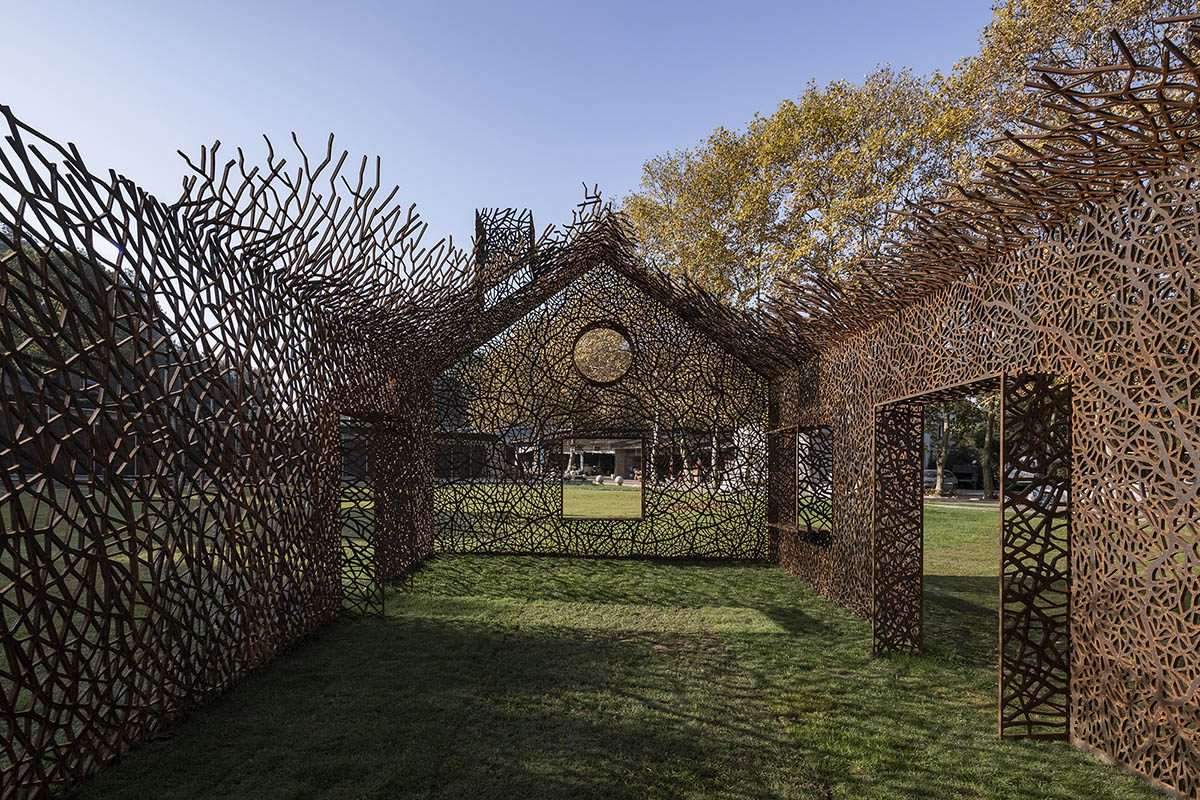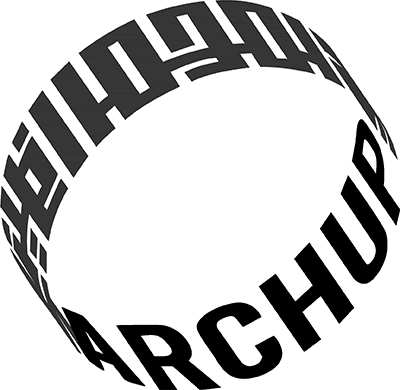Building the Vanished House using stainless steel in Wuhan,
Field Conforming Studio, Beijing, has completed a memorial space that invites visitors to participate and experience.
The project was created for the second East Lake International Biennale of Environmental Sculpture,
held in Wuhan in 2021, called The Vanished House.
The exhibition took place in the Wuhan Ximenfeng Memorial Garden,
a cemetery with a beautiful environment and a calm spatial atmosphere.
A place where the deceased rest in peace, and an ambiance suitable for activities of remembrance and mourning,
The Vanished House was created as an echo of this special feature of the place.

Design Features
The work presents a sprawling ivy-covered house, a symbol of hearth and home,
this detached house to leave a space made up of curly reptiles.
As a memory of a faded living space and thus of people and things from the past,
The Vanished House is a memorial space that invites visitors to share and experience.
The main question for the designers was what kind of home to choose,
especially after they settled in a “vanishing” house to match the exhibition venue.
At first, they thought about choosing the type of house with features specific to Wuhan to present the characteristics of the local area,
but after research they found that the old buildings in the city, especially the apartment buildings,
did not have obvious local features, while the public buildings representing Wuhan were not reasonable choices. for such an environment.
Finally, the team decided to choose the simplest picture the house could have,
and it didn’t include a place or extra symbols, it was just a simple house that looked like a child’s drawing.
The form, without too many styles, adds simplicity and purity to the work, while the sprawling reptile patterns offer further sophistication.
Building the Vanished House using stainless steel in Wuhan
After confirming the spatial form, the designers had to figure out how to convey the sense of a hidden home through the state of the reptile.
To this end, they made a 1:10 scale home miniature using cardboard and ivy drawn on the model to display the growing state of the plants.
In this way, designers were able to control the density and size of the chrome,
as well as the turns and connections they introduce on the walls.
The drawing process was the most emotional and creative part,
and I added a distinctive feature of the crafts and paintings to the work.
Then hard work ensued, after the vines had been drawn on the miniatures,
the designers turning them into vector files, since the final work would be achieved by laser engraving on Corten steel.

They disassembled the model for high-resolution scanning and then converted the scanned files into vector files available for laser engraving.
It was hard and time consuming work, as well as drawing the lines one by one,
the most important procedure was dealing with the connections where the lines flipped.
It was a move that required the team to pay special attention,
as they tweaked and verified the details right up to the start of manufacturing at the factory.
Design materials
One of the most important materials used in the work was corten steel,
which was processed through a laser cutting process.
There are two reasons to choose Corten Steel; the first is that after rusting it turns crimson,
a color that can well express the texture of reptile chrome.
Secondly, “The Vanished House” creates a space that people can enter,
because the wall is made of ivy, it needs a certain strength to form a space.
Without relying on other structural forms, Corten steel plates, which are 2 cm thick,
provide the structural strength required for the wall to support itself.
Over time, the color of Corten steel sheet will darken with sunlight and rain,
and the purpose of this work will become increasingly prominent.
For more architectural news
Tallbacken is a new Scandinavian housing concept located in the forest outside of Stockholm.…


 العربية
العربية